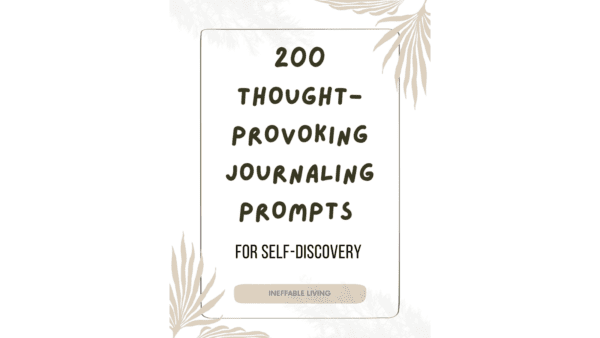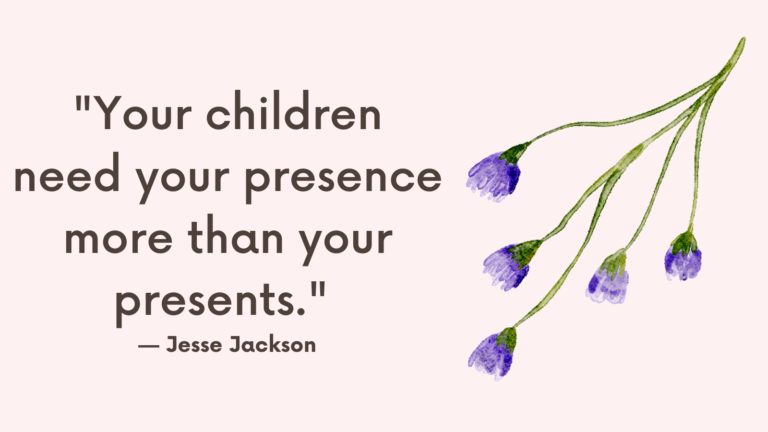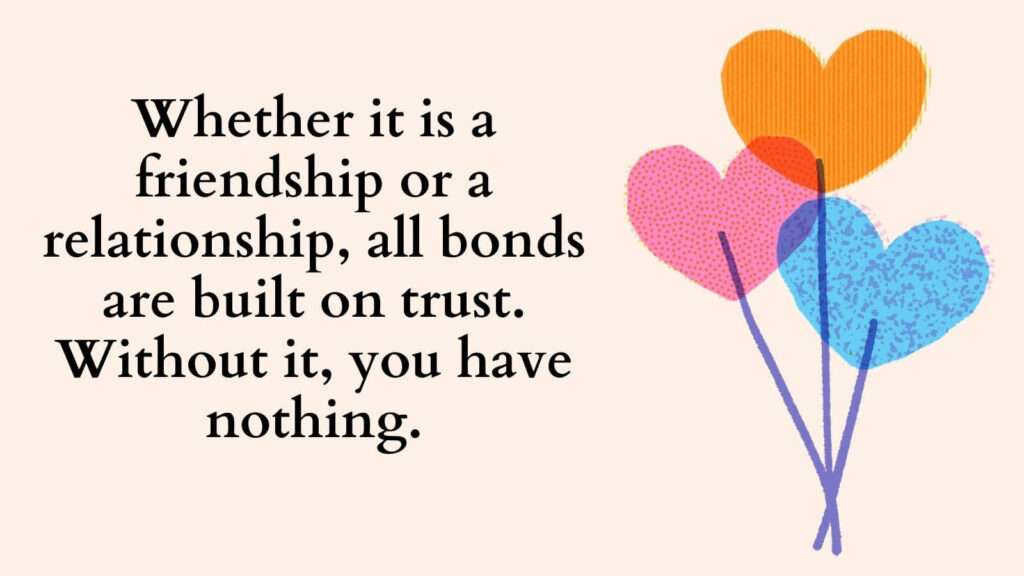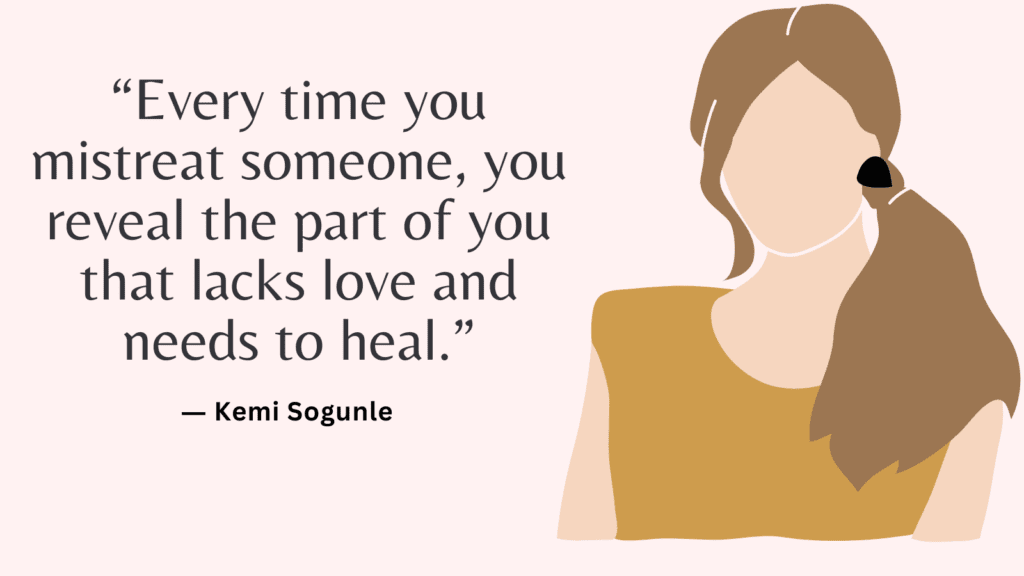Today, you’re learn how to set boundaries in a relationship without being controlling using 25 effective strategies to enforce boundaries in relationships.
Boundaries are limits that bring order to our world.
We initially learn boundaries from our parents or caretakers.
We learn how to apply boundaries to our lives by watching the way our parents and caretakers apply boundaries to theirs.
As we move through childhood stages of development, our boundaries develop in a healthy manner.
If our parents have a weak boundary system, chances are that we will too.
- What Are Emotional Boundaries?
- 4 Types of boundaries
- Unhealthy Boundaries Examples
- FREE People-pleasing Worksheets
- Why Is It Hard To Set Boundaries?
- Do You Struggle With Boundary-Setting? 21 Warning Signs
- How To Set Boundaries In A Relationship Without Being Controlling?
- How Do We Convey Our Boundaries In a Relationship?
- Teaching Kids Boundaries 6 Ways to Help a Child Set Healthy Emotional Boundaries
What Are Emotional Boundaries?
Defining Emotional Boundaries
Emotional boundaries are the protective emotional limits that we use to define how we regulate our acceptance of how others treat us.
Boundaries keep us from being needy, overly empathetic, controlling, or overly pleasing and protect us from emotional abuse or manipulation by other people.
Boundaries are not emotional walls to keep the pain out or to hurt, control, change, manipulate or fix others.
Boundaries are limits that define where we end and others begin. They protect us from abusers and keep us emotionally safe.
In other words, boundaries are not about forcing others to change. they are about deciding what you will and will not tolerate.
Boundaries allow you to enjoy healthier relationships!
The fear of rejection is the main reason why people hold themselves back from setting boundaries.
However, setting boundaries in your relationships will keep you surrounded by only the people who truly love you and want you to be happy.
Relationships become much more genuine and intimate when we assert our needs and are completely honest with each other.
How Do You Know When You Should Set a Boundary?
You need to be able to feel the physical and emotional signs that you’re about to cross a limit.
When you start feeling a little shaky, a boundary is probably a few steps away. If you feel angry, resentful, or helpless, then a boundary has probably been crossed.
When To Set Boundaries In A Relationship?
It’s time to set some boundaries if:
- You feel it’s virtuous when you put others ahead of yourself;
- You equate asserting your own needs with selfishness;
- You feel your privacy is frequently violated;
- You usually allow other to make the plans and choose how you spend time together;
- You often don’t say anything when someone hurts you;
- You feel like a victim as a result of the behavior of others;
- You often feel resentful toward others when they don’t take your needs into consideration or don’t reciprocate your efforts;
- You’ve been able to voice your boundaries but never following through on the consequences when these boundaries are not respected.
Related: Top 19 Journal Prompts For Boundaries
4 Types of boundaries
1. Material boundaries
Material boundaries refer to sharing your possessions and belongings.
Healthy material boundaries involve defining what you share and with whom. For example, it may be appropriate to lend a car to a family member, but not to someone you just met.
2. Physical boundaries
Physical boundaries refer to how, whom, and when you allow someone to enter your space or physically touch you.
For example, when you’re in public, you may decide that it is okay for you to hold hands with your partner, but not kissing.
3. Mental boundaries
Mental boundaries refer to opinions and beliefs, and whether you can hold on to your own when challenged, without becoming rigid.
4. Emotional boundaries
Emotional boundaries define your emotional rights and responsibilities and separate you from those of others.
Related: Healthy Boundaries Quiz (+Free Pdf Worksheets)
Unhealthy Boundaries Examples
1. Enmeshment: Weak Boundaries
Enmeshment is a description of a relationship where the boundary between you and someone else doesn’t exist or is very blurry.
People with weak boundaries may fear being alone and seek close relationships where they lose themselves.
When you’re enmeshed, you feel responsible for your partner’s needs, but don’t take responsibility for your own needs. This leads to conflict and sometimes abuse.
Related: Codependency And Enmeshment: 9 Signs You May Be In An Enmeshed Relationship
2. Rigid boundaries
When your boundaries are rigid, you may be afraid of getting close to others because you haven’t allowed yourself to learn how to protect yourself.
You may isolate socially, or remain distant in your relationships, which only creates problems for others who aren’t allowed to get close.
You may use silence, anger, or distrust as protective mechanisms.
3. Broken and mixed boundaries
When your boundaries are broken, you may have limits in certain situations, some of the time, or with certain people.
For example, you may lose your boundaries under stress or set limits with family, but not with friends. Your boundaries may also go from weak to rigid after being hurt or when you feel afraid of intimacy.
Related: What Do Boundaries Sound Like? + 35 Boundaries Examples
What Boundaries Sound Like
It is my responsibility to make myself happy and figure out what brings me joy
It is not my responsibility to make sure everyone is happy
It is not my job to rescue people
I do not have to anticipate other people’s needs
It is okay to say No
It is okay if other people get angry
It is okay to spend time alone without having to explain myself
It is okay if the other person didn’t agree with me
It is okay to be myself and not what others want me to be
No one has the right to abuse me or disrespect me in anyway, including my family, friends, partner, coworkers, or employer
FREE People-pleasing Worksheets
Why Is It Hard To Set Boundaries?
1. We’re Not Always Taught This Stuff
We’re rarely taught how to take care of our emotional health or that we can indeed say no without dire consequences.
It’s never occurred to some of us that we have the choice to set limits for ourselves and those around us.
In our formative years, if the people around us don’t understand boundaries and don’t set examples of their limits in a clear and consistent way, then as adults, we have a lot to unlearn and relearn.
2. We Fear Rejection
Fear of rejection is also responsible for preventing up from speaking up, becoming an expert at people-pleasing, and in general, avoiding any situation or conversation where we might be judged or rejected.
Every time we give in to the fear of rejection, we’re reinforcing the story we tell ourselves about how we will only be accepted by pleasing others – that is masking our true feelings and desires, and behaving how we believe people want us to.
Related: People Pleaser Quiz (+Top 21 Proven Ways to Stop People Pleasing)
3. Boundaries Themselves Are Misused and Misunderstood
Boundaries can be misused as a means of manipulation and control, or to build walls around us.
Experiences such as having our privacy constantly violated, being lied to, encountering people with a strong sense of entitlement, etc can impact our sense of boundaries.
4. Boundaries Can Feel Like Rejection
Although other people’s boundaries have nothing to do with us, we can’t help but feel rejected and as if they do not hold in as high esteem as we hold them when they are not available.
This is especially true when we don’t have healthy boundaries set and we would jump to meet other people’s needs and do whatever we can to help them.
5. We Confuse Assertion with Aggression
Setting boundaries requires us to stand firm and be willing to follow through on consequences when these limits are not respected.
If we haven’t had much practice in asserting ourselves, setting boundaries can feel aggressive when we do it.
But there’s a big difference between assertion and aggression. We can stand up for ourselves and do so respectfully, honestly, and calmly. When we’re asserting ourselves, we aim for affirming our beliefs and opinions rather than trying to control the other person.
Related: Top 35 Boundaries Affirmations To Help You Become More Assertive
Do You Struggle With Boundary-Setting? 21 Warning Signs
Do you identify with any of these signs?
- You don’t speak up when you’re being mistreated.
- You frequently feel angry, resentful, overwhelmed, or tired.
- You feel physically or emotionally unsafe.
- You don’t know how to ask for what you need.
- You don’t have a strong sense of who you are and what your values and interests are.
- You’re constantly worried about how other people feel, but don’t always know how you feel.
- You’re afraid to say no because you don’t want to disappoint people.
- You think you are not as important as others.
- You don’t take time to care for yourself.
- You don’t communicate your limits to others.
- You feel guilty when you set limits or do things for yourself.
- You make commitments that you later regret.
- You do things out of obligation rather than because you want to.
- You accept blame for things you didn’t do or couldn’t control.
- You blame others for things you’re responsible for.
- You enable others to be irresponsible by doing things for them rather than letting them face the consequences of their behavior.
- You spend a lot of time, energy, or money trying to solve other people’s problems.
- You feel obligated to answer personal questions.
- You overshare personal information or get close to people before trust is established.
- You tend to act passive-aggressively rather than directly expressing your feelings and needs.
- You struggle with self-discipline (managing your money, time, eating, social media use, etc.).
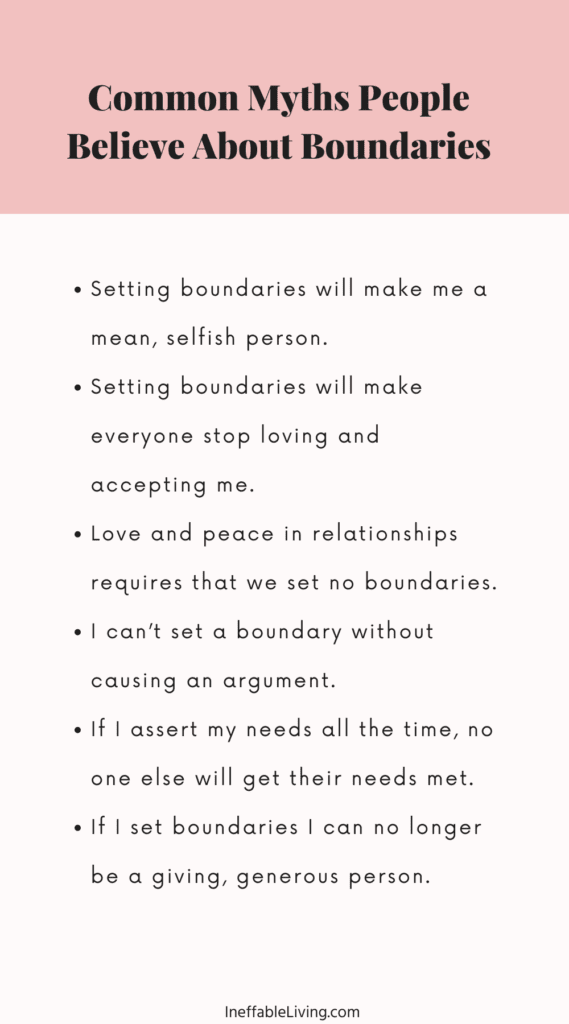
Signs of Toxic People
They are always in crisis or need someone to “vent” to
They often see their problems as “worse” than people around them
They never check in to see how you are doing
They use guilt when they feel you haven’t done enough for them
They often monopolize the conversation and seek a lot of attention
They have a hard time being happy for you
They rarely thank you for the time and effort you put in for them
They are not there for you when you need them
How To Set Boundaries In A Relationship Without Being Controlling?
#1. Recognize The Difference Between Self-Love And Self-Worship
If you have suffered emotional abuse, you might have been programmed to feel guilty about loving yourself and were told that it’s selfish to think of yourself at all.
The line between self-love and self-worship becomes blurred.
Self-worship is selfish and egotistical.
Self-love, on the other hand, is our way to show appreciation for the gift of life. It is only when you love yourself, that you can truly love others.
But self-love isn’t possible without a healthy boundary system.
The Consequences of Not Setting Boundaries
By not setting boundaries…
- We give up our own desires for everyone else’s—living for everyone but ourselves.
- We end up angry, resentful, and bitter. No matter how hard you try to suppress these emotions, they come out one way or another. Your either explode in rage and shock everyone around you, including yourself, or become physically ill.
- We sacrifice ourselves in order to maintain a false sense of peace in relationships. We live in fear that we’ll end up abandoned and alone.
Related: How To Start A Self Love Journey? Top 10 Powerful Ways to Love Yourself More
#2. Acknowledge Your Role In This
Setting boundaries requires that you take responsibility and come to terms with a harsh truth—you’re the one who has been crossing your own boundaries.
Yes, it’s true. Nobody can cross your boundary unless you allow it.
It’s your responsibility to define, set, and communicate your boundaries. Then, if your boundary gets crossed, you need follow take a stand and through on consequences. If you don’t, then you’re crossing your own boundaries.
The truth is, we can’t control other people’s behavior. It’s not their job to respect our boundaries.
But it is not about other people’s behaviors. It is about how you react to their behaviors and how you take care of yourself.
It’s much more comforting to maintain the victim mindset and blame others for what happens to you. But refusing to take responsibility for your boundaries means you give away your power and become resigned that your fate is inevitable, without hope for other possibilities.
Related: Best 9 Tips On How To Stop Avoidance Coping (+FREE Worksheets PDF)
#3. Take Your Boundary Inventory
We all have boundaries, but many of us are not communicating them to others or not setting consequences when they are respected.
Make a list of boundaries that are overdue in your life.
For example, you might have taken on all of the cleaning responsibilities in your household and you’re feeling exhausted and resentful.
Maybe your boss keeps you after work without extra pay, and you won’t say anything about it because you’re afraid you might lose your job.
Ask yourself, “Am I taking care of myself by setting limits that feel good to me? What boundaries should I be setting that I’m avoiding?”
Think of the relationships you fear losing if you set boundaries and the situations in which you find yourself complaining or whining. These usually indicate louse boundaries.
These boundaries are usually the result of trying to avoid conflict at all costs, even though it’s inconvenient for you and leaving you with so much stress and resentment.
Related: Top 35 Boundaries Affirmations To Help You Become More Assertive

#4. Address Codependency
Many people who struggle with setting boundaries are codependent.
Codependency is about taking responsibility for others while denying our own needs. However, codependency isn’t as selfless as it looks like.
In fact, codependency involves more taking than giving, since it comes from need and deprivation. It comes with strings attached; it is used as a means to control a relationship and get the love and attention we crave.
Awareness is the first step toward changing your codependent tendencies. You need to clearly define your desires and needs and work on meeting them rather than allow them to be altered by anyone else’s desires and needs.
Learn to catch yourself whenever you make someone else’s desires more important than your own. Pay attention to your behavior and notice when you put others first without considering your own needs.
Related: Best 20 Must-Read Books On Codependency
#5. Face Your Fears
The only way to overcome fear is to face it.
Although our fears feel real to us, they aren’t always accurate. Most of our fears are perceived based on misperceptions and are overgeneralized.
For example, if your mother got upset whenever you attempted to set a boundary, you may fear that you’ll be hurting others if you set boundaries.
Although you may realize that not everyone will get upset if you’re to set a boundary, fear can override logic and prevent you from asserting your needs.
Identify the fears you have about setting boundaries. The following are some examples:
I fear:
- Hurting others’ feelings
- Conflict or physical abuse
- Being misunderstood
- Being ignored
- Being criticized or ridiculed
- Disappointing others
- Being rejected or abandoned
- Giving in or failing to maintain my boundaries
- Realizing that important people in my life don’t care about me
Try challenging your fear by answering the following questions:
- Is this thought helpful?
- Is this thought or belief based on facts or opinions?
- What evidence do I have to support this thought?
- Are there other ways that I can think about this situation?
- Am I overgeneralizing?
- What would I say to a dear friend in this situation?
Related: Top 10 Practical CBT Exercises For Generalized Anxiety Disorder Relief
#6. Uncover The Underlying Limiting Beliefs
According to studies, most of the mind’s activity, including emotions and behaviors, is unconscious.
That is why the more we’re able to bring the unconscious into conscious awareness, the healthier we become and the more control we can take of asserting what we want and need.
Unless you free yourself from the limiting beliefs that prevented you from setting boundaries in the first place, true change won’t take place.
Perhaps you have a belief that you aren’t safe when someone is angry with you. So, you have an underlying belief that you should never make anyone angry. In order to keep this commitment, you will refrain from setting boundaries or asserting your needs for fear of upsetting others.
While a belief like “never make anyone angry” could have been a good defense mechanism when we were children. As adults, however, such beliefs end up hurting us.
If you are struggling to set boundaries with certain people, ask yourself “What underlying belief do I have that’s preventing me from setting a boundary with this person?” and challenge the belief’s validity.
You can’t start setting healthy emotional boundaries if you still believe it’s wrong.
If you find yourself feeling guilty when attempting to set a boundary, then that might be a sign that you believe you’re doing something wrong.
The following are some common negative beliefs around setting boundaries:
- Being selfless is a virtue.
- I should always put others before myself.
- It’s my responsibility to take care of others.
- Having needs is a weakness.
- If I do need or want something, I shouldn’t ask for it. People who care about me will give it without me having to ask for it.
- It’s mean and rude to say no.
- It’s selfish to consider my own needs.
Negative beliefs around setting boundaries usually include a deeply-held belief that we’re not responsible for taking care of ourselves and that if we take care of other people’s needs, then they’ll reciprocate. That rarely happens, leaving us feeling frustrated and resentful.
Setting boundaries is based on the idea that each person is responsible for meeting his own needs, including asserting them to others, and that we matter as much as everybody else.
Related: Negative Core Beliefs List (& 8 Tips On How To Challenge Them)
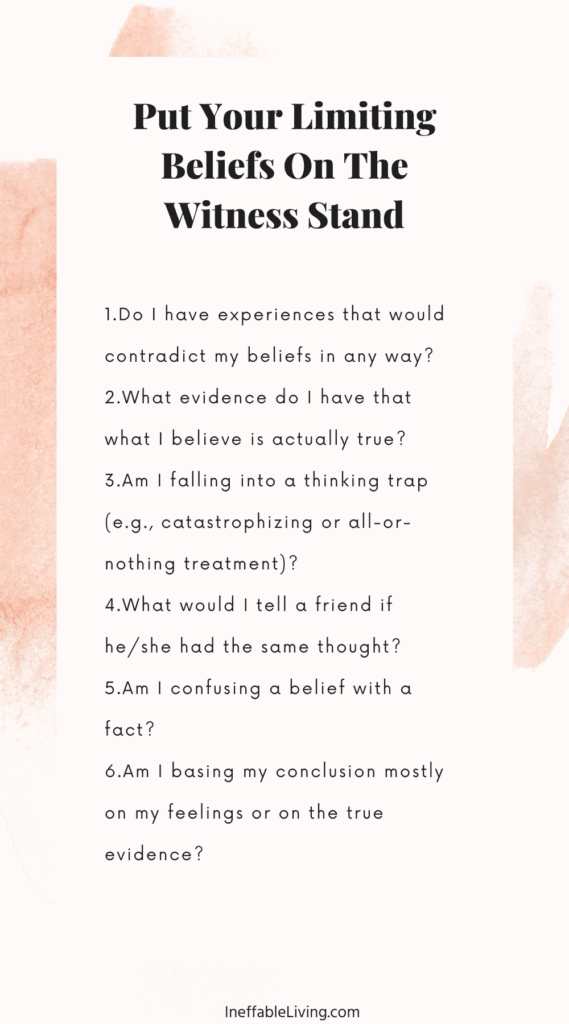
#7. Acknowledge Your Personal Rights In Relationships
We all have the same personal rights and you deserve to be treated with the same respect and kindness you’d treat someone else with.
This might be hard to believe, especially if it was different from what you learned from your parents or culture.
But unless you challenge these messages, you’ll continue to feel unworthy and undeserving of love and respect.
The following is a list of personal rights to consider and you may add to the list:
- I have the right to say no.
- I have the right to change my mind.
- I have the right to be treated with respect and compassion.
- I have the right to be physically and emotionally safe.
- I have the right to privacy.
- I have the right to have my own thoughts, feelings, and values.
- I have the right to decide to share or not share my possessions.
- I have the right to distance myself from or end relationships with negative or hurtful people.
- I have a right to express all of my feelings—positive and negative.
- I have a right to make mistakes and not be perfect.
- I have the right to be angry at someone I love.
- I have the right to say, “I don’t know.”
- I have the right to be treated with dignity and respect.
- I have the right to
- I have the right to
- I have the right to
#8. Treat yourself with respect and compassion.
Before expecting others to treat you with respect and compassion, start treating yourself with respect and compassion. Deliberately practice self-care every day and start encouraging yourself rather than criticizing yourself.
Identify three self-care activities that you can do today to show yourself respect and compassion.
#9. Get Back in Touch with Yourself
Not setting healthy personal boundaries can result in losing touch with ourselves and our identity merging with the identities of others.
We’re not sure who we are, what we like or dislike, and what lifts us or deflates us, and instead borrow other people’s preferences.
We can end up feeling too dependent to be able to stand alone.
Exploring who you are
Our identity is made up of different elements: personality traits, qualities, beliefs, what we look and sound like, how we express ourselves, our preferences, our culture, etc.
These elements change and evolve as we grow, that’s why it’s important to stay in touch with ourselves.
Start reflecting on the question “Who am I?”
You might find it easier to flip the question and start with “Who am I not?” if you’re not an outgoing, extrovert, then you’re probably an introvert who prefers chilling at home.
#10. Identify and Honor Your Own Needs
The first step to set healthy emotional boundaries is to identify, acknowledge, understand, and honor your own needs.
Before you can decide what treatment you will and will not tolerate from others, you need to start treating yourself the way you wish to be treated.
It is your responsibility to show others how to treat you and you do that by acknowledging and honoring your own needs.
Universal Human Needs
- Acceptance
- Affection
- Appreciation
- Authenticity
- Belonging
- Companionship
- Compassion
- Connection
- Consistency
- Creative outlets
- Emotional safety
- Empathy
- Excitement or novelty
- Food and water
- Fun
- Help or support
- Honesty
- Independence or autonomy
- Intimacy
- Joy
- Kindness
- Love
- Nurturing
- Physical safety
- Physical touch
- Privacy or time alone
- Quiet
- Respect
- Rest and sleep
- Self-expression
- Spiritual connection
- Support
- To be challenged
- To understand and be understood
- Trust
Determine Your Core Values
Life can be so hectic that we don’t have time to think about our values and we often end up only think about what others tell us to believe or value.
To determine your needs, you need to identify your core values, and for that, you need to set aside all that you’ve been told to believe in and concentrate on what you really esteem and value.
For example, someone who is financially responsible, wouldn’t say yes to an invitation to a fancy restaurant.
Take a situation in your life, and think about how you act in it, and try to relate it to values you have.
List of possible positive characteristics and values
Appreciation of others · Artistic ability · Awareness of environment · Assertiveness · Balance · Being part of a community · Being in a team · Capacity to change and develop · Chilling out · Collaborating with others · Connecting with people · Creativity · Excitement · Financial management · Family commitment · Freedom · Friendship · Fun · Generosity · Helping others · Honesty · Honour · Humour · Independence · Individuality · Intelligence · Integrity · Intimacy · Kindness · Learning from experience · Looking after myself · Love · Musical ability · Networking · Not taking myself too seriously · Organizational skills · Physical health · Physical fitness · Relaxed approach and attitude · Reliability · Religious lifestyle · Risk-taking · Self-awareness · Self-expression · Sensuality · Sexuality · Sharing · Solitude · Social conscience · Standing up for rights · Spirituality · Stability · Success · Understanding
Related: 21 Days to Grow in Self-Love
#11. Get Clear And Specific On What Your Boundaries Are
You’re the only one who decides what you will tolerate and what you will not tolerate.
When dealing with other people, you need to be as explicit and direct as you can about your boundaries.
For example, if you don’t like it when people call you late at night, how will they know that if you don’t tell them?
Your boundaries will have different levels of flexibility and will be different for different people in your life. It is one thing when a family member asks to drive them somewhere, but it’s quite another when a casual buddy from work does so.
Clearly Communicate Your Boundaries To Others
Make sure everybody’s very clear on what your limits are.
Some people will get it if you just drop a slight hint. Others aren’t quite as intuitive and you will need more explicit and direct ways to communicate your boundaries.
If someone asks about a personal matter you don’t feel comfortable discussing with them, you can communicate your wish, implicitly by responding, “Why do you ask?”
If the person didn’t pick up on that clue and back off, you can try more explicit ways by responding, “I don’t like to discuss that,” or “Please stop asking me about this topic.”
Related: 4 Keys To Communicate Effectively With Anyone

#12. Use Anger Effectively
Anger is a natural, healthy emotion we feel when our boundary gets crossed.
How dare they do that?
However, many of us received the message that anger is unacceptable and dangerous and were taught to avoid expressing it.
But repressing anger is the main reason why we fail to set and reinforce our boundaries.
Anger, when expressed mindfully, can be extremely effective in boundaries setting.
The key here is to recognize anger and say to yourself and later to others “I’m feeling angry.” Then express what made you feel angry and what needs to be done to fix the injustice you felt.
Anger is first felt in the body (in your jaw, stomach, throat, heart, etc.), so it’s easier to recognize anger early on when you mindfully notice your bodily sensations.
Related: How To Manage Your Anger In Healthy, Effective Ways?
#13. Set The Consequences
Consequences should be established to reinforce your boundaries and let the other person know that you mean business.
When someone violates your boundaries or trespassed into your personal space, you are entitled to stand your emotional ground and protect your personal space.
This is done by letting the other person face the consequences.
These consequences can be anything as long as they’re not “doing nothing.”
For example, if someone is bullying you on social media or continuing to be disrespectful despite pointing it out, you might un-friend or block them, or if someone keeps coming late, you tell them that you’ll wait 10 more minutes and leave, and if they don’t show up by then, leave.
You can expect these people to react unfavorably, and call you judgmental, or irrational. Simply see it as part of the process of setting the consequence.
#14. Stop People-Pleasing
People-pleasing makes it almost impossible to set healthy emotional boundaries in our lives.
When we are overaccommodating, take responsibility for how other people feel, avoid arguments, don’t speak up when we feel hurt— we grow out of tune with ourselves and begin to feel unheard, unseen, and resentful.
But no matter how hard we try, we can never keep everyone happy all of the time—nor is it our place to take responsibility for the happiness of others.
1. Practice speaking your preferences aloud
When asked for what you want to do, rather than saying, “I don’t mind, what do you want to do?” start speaking your preferences.
Choose what you’d like to drink, eat, listen to, watch, or do.
2. Think of the no to someone else as a gleaming yes to you
Instead of worrying about how disappointed the other person will be, start thinking about the freer time and energy you’ll have and what could you do with it.
Come up with a list of books, films, DIY projects, and other self-care activities you’d want to do more of.
3. Remind yourself that it is okay to set boundaries
Boundaries are essential for our mental health and it is okay to disappoint others as long you’re not disappointing yourself.
#15. Allow Yourself to Feel Guilt
Guilt is a natural and healthy feeling.
But when guilt becomes a safety mechanism keeping you stuck, it becomes unhealthy.
You can feel guilty and still hold your boundaries.
Guilt is not always a sign that you’re doing something wrong. When it comes to taking a stand and setting boundaries, guilt is a sign that you’re breaking old patterns and doing something right.
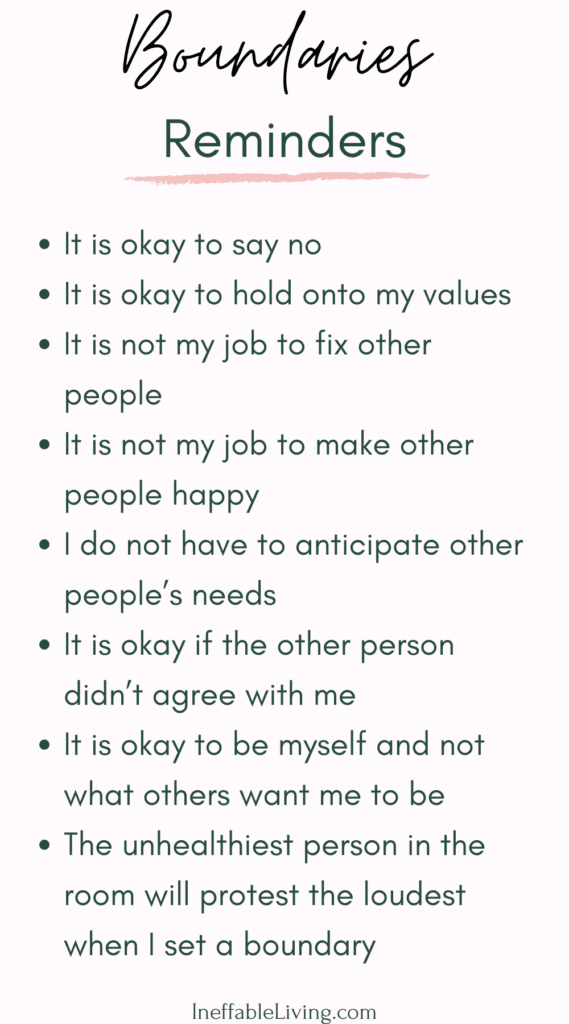
#16. Get Comfortable with Short-Term Discomfort
One of the main reasons boundaries are hard to set and follow through, is the short-term discomfort involved.
When considering the short-term discomfort, it is important to think about the long-term resentment and decide whether it’s worth it.
The truth is when you avoid the external discomfort, you are choosing the internal discomfort of facing your own suffering—you’re feeling discomfort either way.
Make a list of the “Dreaded Consequences”—all the terrible things you believe will happen if you set a boundary with certain people.
You might find out that your fears skip right to the extreme.
While there can be consequences to setting boundaries, the results are almost always not as extreme as we anticipate.
#17. Face Your Fear of Conflict
Consistent harmony in any relationship is unrealistic.
The more you avoid the conflict of addressing what isn’t working, the more the resentment festers. Avoiding conflict in a relationship creates conflict inside ourselves.
Rather than seeing conflict as dangerous, try reframing it as an opportunity to grow and learn something about each other.
Differences can help the relationship evolve and become even stronger when done in a healthy way.
Related: How To Deal Effectively With Marital Conflict? (Communication and Conflict Resolution In Marriage)
#18. Envision Your Empowered Future
When thinking about setting boundaries, we usually focus on the discomfort and the fear of facing conflict rather than the positive possibilities on the other side of setting a boundary.
Imagining what your life would look like when you master boundary setting can help you follow through and enforce your boundaries.
It can give you the confidence and courage to make better choices for yourself.
#19. Be Compassionate and Forgiving With Yourself When You Falter
Setting boundaries with an abuser for the first time might not come easily and might make you feel uncomfortable
You’re bound to make mistakes and you are likely to slip back into old patterns for a while. That is perfectly fine. It’s part of the learning process, just keep practicing.
Setting boundaries with an abuser is the first step in rebuilding your self-esteem and regaining your personal power. These boundaries will protect you from further abuse and change the way you view yourself.
Related: Raising low self-esteem: 18 Ways to Build High Self-Esteem
When You Are on the Other Side of Someone’s Boundary
If you tend to allow others to cross your boundaries, chances are you have also crossed others’ boundaries as well.
If you felt rejected when someone et a strong boundary with you, can you reframe that experience in your mind, now that you understand more about the importance of boundary setting?
What If Others Don’t Accept Your Boundaries?
Some people might not understand why you’ve set up certain rules or boundaries. That’s perfectly fine. They don’t have to. These boundaries are your decision and you have every right to set them up. You don’t owe any explanation.
You don’t have to justify a thing or describe your reasoning or what caused you to make that decision.
A boundary is set to protect you and protect what’s important to you, and that is all you need to be concerned about.
“No” is a perfectly complete sentence.
Struggling still with people pleasing, check out this article to find out How to Overcome People Pleasing for Good?
How Do We Convey Our Boundaries In a Relationship?
Why Boundaries In a Relationship Are Important?
Boundaries harness intimacy, trust, and honesty.
When boundaries in a relationship are too loose, we build our identity around our relationship with someone else. We become somebody’s partner, which diminishes the potential of who we are and who we might grow into.
We convey our boundaries in a relationship by clearly communicating what we’re willing to tolerate and what we’re not willing to tolerate, our likes and dislikes, what’s right and wrong for us.
There will be endless opportunities to assert and adjust these limits.
#20. Communication
We often underestimate communication.
We forget that other people can’t read our minds in the same way that we can’t read theirs. Unless we’re willing to verbalize our needs, they won’t be able to know what they are.
We might say yes to a request when really mean to say no. This comes at a cost to our time, energy, but also to our relationships as we often end up feeling resentful and frustrated.
But communication doesn’t just involve the words we say. It is also nonverbal – our facial expressions, body language, tone of voice – that really helps when we’re asserting our boundaries.
Related: How to Be More Effective in Relationships (Effective Communication)
#21. Take Responsibility, but Not for Everything
When we blame other people, we’re handing over our self-control, choices, and decisions – we’re disempowering ourselves.
The truth is, we don’t live a life that someone else has decided for us. We have a say in what we do and how we do it.
Boundaries help us to take responsibility for ourselves and our lives. They also encourage other people to learn to take responsibility for themselves.
Related: 5 Steps to Take Back Your Power And Start Loving Your Life
#22. We Can’t and We Don’t Have to Fix Everything and Everyone
When our happiness stems from how happy or unhappy the people around us are, it’s natural for us to want to fix their problems.
It’s easy to figure out the solutions to other people’s problems because we are looking at them with less emotion.
But the truth is, it’s not our place to do so and it’s not always helpful or kind – it’s an infringement of boundaries that might leave these people resentful.
Related: Healing From A Codependent Relationship: 7 Ways to Conquer Codependency
#23. Expect Resistance
We naturally resist change. We prefer things to stay the same. For many of us, change can evoke a fear of uncertainty.
So it’s only natural for you to experience inner resistance as you set down this path of boundary work.
You may experience this as self-doubting thoughts: “Am I hurting other people?” or, “Am I being selfish?”
The best way to deal with this inner resistance is to clarify your “why” — understanding the need for the change.
Remind yourself that boundaries are there to harness intimacy and honesty and not to push other people away.
Related: 10 Proven Ways to Make Any Change Quick and Permanent
#24. Do Take No for an Answer
“No” is a complete sentence that should require no explanation.
For some people it’s being on the receiving end of a “No” can be more challenging than saying no to other people.
Although learning to assert our no, no matter the consequence, is important, learning to receive a no is equally important.
#25. Be Straightforward With Your No
A yes can also be a “maybe later,” or, “I don’t know.”
Although not being straightforward, usually stems from our fear of hurting other people’s feelings, being honest can be more important in maintaining healthy, balanced relationships.
People who really care about us would rather we were straightforward and honest, which begs the question: If people in our lives would rather we were burned-out keeping their needs met, then why do we keep giving away our yeses to those people?
Your yeses represent your valuable resources – time, energy, and sometimes money – don’t scatter them around.
What About Compromise?
Relationships require us to compromise, but that doesn’t mean we have to compromise ourselves in the process – we don’t have to give up the things that are most important to us.
Compromise also requires mutuality and reciprocity. Healthy relationships value mutual benefit, equity, and fairness, and support what’s important to each person.
Walking Away Is Sometimes Your Only Option
Although walking away requires less time and energy than trying to fix a relationship, sometimes it’s tough, especially when we’re experiencing shame and guilt.
We can reframe walking away by considering what we might be walking toward – peace, freedom, better emotional health, etc.
How Do You Know If a Relationship Is Toxic?
You know you are in a toxic relationship when you feel as though you’re walking on eggshells with all the compromises that are involved.
Some signs of a toxic relationship include: constant criticism and judgment, constant belittling, guilt-tripping, withdrawal of affection, a lack of trust, endless disagreement, perpetual lying, gaslighting, conditional love, disrespect, isolating you from friends and family, and attempts to control and manipulate you.
When no amount of communicating or boundary-setting seems to address unhealthy issues in a relationship, walking away could be our only option.
Related: 10 Steps to Heal Your Broken Heart and Move On From a Relationship
Teaching Kids Boundaries 6 Ways to Help a Child Set Healthy Emotional Boundaries
Teaching boundaries to our children can be challenging what we have not fully figured out things. We’ll need to adopt what worked well and adapt the things that didn’t.
#1. Empower Their No
When we constantly demand from our children to “Do as you’re told,” it becomes problematic they grow up to be adults and continue to “do as they’re told.”
Be mindful of your child’s verbal and nonverbal protests. If they don’t feel comfortable kissing a relative goodbye, for example, respect and empower their no by letting them know it’s okay not to kiss anyone they don’t want to — it’s an act of affection that should be given freely.
#2. Offer Explanations And Reasonings Rather Than “Because I Said So.”
It’s is perfectly healthy to question, understand why, and challenge the status quo.
Even if, to our perspective, it doesn’t seem unfair, encourage the questioning of things that feels wrong to the child.
Sometimes your no is a no: “No, you can’t hit your sibling.” Empowering the child’s no goes hand in hand with teaching him to respect the no of others. And consistency is key here.
#3. Encourage Decision-Making from an Early Age
There is a lot of children can learn from making their own decisions: deliberating, dealing with consequences, and learning from their mistakes.
We can encourage decision-making by providing freedom of choice and honoring that. This begins with choosing what they wear, what snack they eat, what games they play, or involving them in the weekend or vacation plans.
Allow them to change their minds and make space for their insights and perceptions.
When they come to us with a problem, hold yourself from fixing it and try to inspire them to start thinking of solutions for their own problems.
#4. Respect Their Privacy
Boundaries also extend to the child’s personal headspace.
If your child came home exhausted and not feeling like answering every question you had about their day, it’s okay to give them their own space. Eventually, important details will filter out at dinner, or during an unrelated conversation.
This can also help them learn to respect and consider the feelings of others.
A child’s belongings, especially their diary or journal shouldn’t be read. We all deserve personal private space that’s respected.
#5. Help Them Connect With Their Own Needs
When the child’s needs go unheeded, invalidated, and silenced, the child’s loses touch with their own needs.
That’s why it’s important to help our children understand the importance of their needs while at the same time respect the needs of others.
When feeling overwhelmed, worried, scared, or tired, we can assist them in exploring what they need at that moment – be it reassurance, comforting, soothing, cognitive tools, etc.
In the same way, we can help them explore what makes them feel happy and supported and encourage more of that.
#6. Keep In Mind That Actions Speak Louder Than Words
Words are especially powerful when followed through with aligned action and consequences, because children are also learning from the things they see us do.
Action includes nonverbal communication (our body language, facial expressions, and tone of voice), and how we react in certain situations.
Resources
- Portions of this article were adapted from the book Close Encounters of the Worst Kind, © 2017 by Randi G Fine. All rights reserved.
- Portions of this article were adapted from the book Making Space, © 2019 by Jayne Hardy. All rights reserved.
- How to Set Healthy Boundaries: 10 Examples + PDF Worksheets (positivepsychology.com)
- Personal Boundaries: Types and How to Set Them | Psych Central

